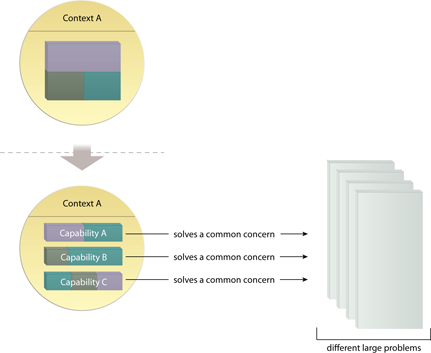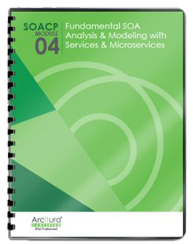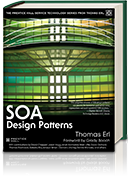SOA Patterns > Foundational Service Patterns > Agnostic Capability
Agnostic Capability (Erl)
How can multipurpose service logic be made effectively consumable and composable?

Problem
Service capabilities derived from specific concerns may not be useful to multiple service consumers, thereby reducing the reusability potential of the agnostic service.
Solution
Agnostic service logic is partitioned into a set of well-defined capabilities that address common concerns not specific to any one problem.
Application
Service capabilities are defined and iteratively refined through proven analysis and modeling processes.
Impacts
The definition of each service capability requires extra up-front analysis and design effort.
Architecture
Service
 Through the application of this pattern, the service logic grouped within a specific service context is made available as a set of well-defined and complementary capabilities.
Through the application of this pattern, the service logic grouped within a specific service context is made available as a set of well-defined and complementary capabilities.
Related Patterns in This Catalog
Agnostic Context, Canonical Expression, Capability Composition, Capability Recomposition, Logic Centralization
Related Service-Oriented Computing Goals
Increased Business and Technology Alignment, Increased Organizational Agility, Increased ROI, Reduced IT Burden
This pattern is covered in SOACP Module 4: Fundamental SOA Analysis & Modeling with Services & Microservices.
For more information regarding the SOA Certified Pofessional (SOACP) curriculum,
visit www.arcitura.com/soa.
This page contains excerpts from:
SOA Design Patterns by Thomas Erl
(ISBN: 0136135161, Hardcover, Full-Color, 400+ Illustrations, 865 pages)
For more information about this book, visit www.arcitura.com/books.

